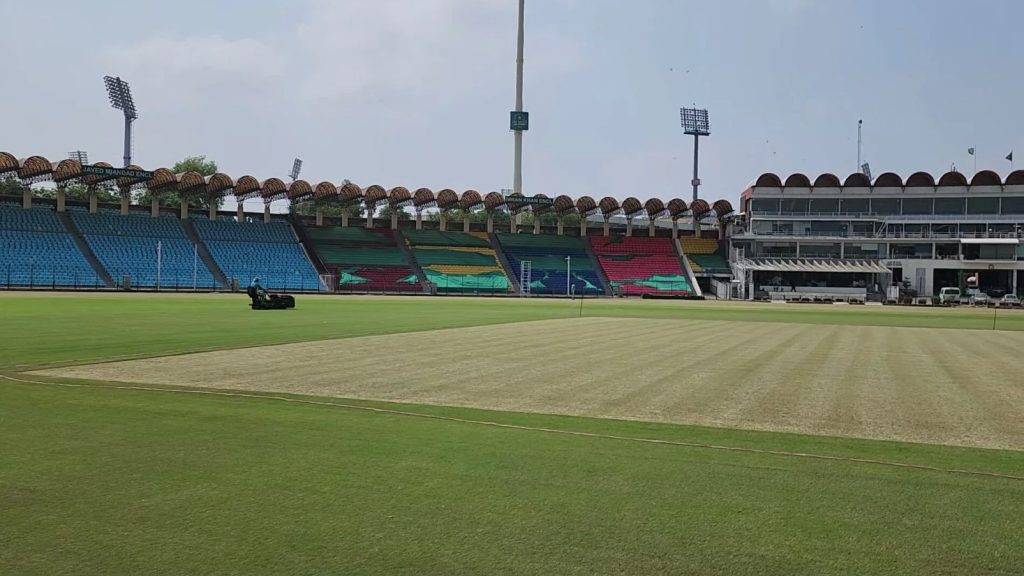E2Bet : Gaddafi Stadium, located in Lahore, Pakistan, is one of the most iconic cricket grounds in the country and a centerpiece of cricket history in South Asia. Built in 1959 and renamed in 1974 after Libyan leader Muammar Gaddafi, the stadium has hosted numerous historic matches, including World Cup games, PSL finals, and bilateral series. While much has been written about its history and architecture, one often overlooked yet critical aspect is its boundary length—a key factor influencing match dynamics, particularly in T20 and ODI formats.
Overview of Gaddafi Stadium
Before diving into the specifics of boundary dimensions, it’s important to understand the general layout of the stadium:
| Feature | Description |
|---|---|
| Location | Lahore, Punjab, Pakistan |
| Year Established | 1959 |
| Seating Capacity | Approximately 27,000 |
| End Names | Pavilion End, College End |
| Renovation | Major renovation in 1996 for World Cup |
| Pitch Type | Batting-friendly with even bounce |
Boundary Dimensions of Gaddafi Stadium
Unlike fixed football fields, cricket grounds vary in boundary sizes due to oval shapes and differing layouts. Gaddafi Stadium features a generally symmetrical layout, but like all grounds, there are slight variations depending on pitch location and temporary boundary placements.
Standard Boundary Measurements (Approximate)
| Side of Ground | Length (in meters) | Length (in feet) |
|---|---|---|
| Straight (down the ground) | 75-80 meters | 246-262 feet |
| Square boundaries (off/on side) | 65-70 meters | 213-230 feet |
| Fine leg/Third man | 60-65 meters | 197-213 feet |
| Long on/Long off | 70-75 meters | 230-246 feet |
Impact of Boundary Length on Gameplay
1. Batting Strategy
Shorter square boundaries, as seen at Gaddafi Stadium, often lead to high-scoring games, especially in T20s. Batters tend to target the square leg and point regions more aggressively, particularly when the boundary is around the 65-meter mark.
2. Bowling Tactics
For bowlers, especially spinners, boundary lengths dictate field placement. On a ground like Gaddafi Stadium:
- Spinners aim to bowl fuller to discourage square cuts and pulls.
- Fast bowlers use bouncers sparingly unless backed by a long square boundary.
3. Comparison with Other Grounds
| Stadium | Straight Boundary (m) | Square Boundary (m) |
|---|---|---|
| Gaddafi Stadium, Lahore | 75-80 | 65-70 |
| Eden Gardens, Kolkata | 70-75 | 63-67 |
| Melbourne Cricket Ground | 85-90 | 80-85 |
| Sharjah Cricket Stadium | 60-65 | 60-65 |
Gaddafi sits in the mid-range—longer than Sharjah but smaller than MCG.
Stadium Design and Boundary Placement
Gaddafi Stadium’s boundary ropes are set based on:
- Pitch used (center, slightly off-center).
- Match type (Test matches often have longer boundaries).
- Event management (PSL games may use shorter ropes for entertainment value).
The symmetrical nature of the ground ensures fairness, although wind direction can play a role in match outcomes, particularly when the Pavilion End is used for attacking strokes.
Historical High Scores & Boundary Records
Over the years, Gaddafi Stadium has witnessed several explosive innings that leveraged the boundary dimensions:
| Player | Score | Opponent | Year | Notable Shots |
|---|---|---|---|---|
| Fakhar Zaman | 143 | South Africa | 2021 | Multiple sixes over square leg |
| Babar Azam | 122 | South Africa | 2021 | Strong cover drives and pulls |
| Chris Gayle | 86 | Peshawar Zalmi | 2020 | Towering sixes straight and square |
These records illustrate how boundary length directly contributes to scoring patterns.
Future Developments and Considerations
With the potential modernization of cricket stadiums, discussions often revolve around:
- Introducing uniform boundary limits for international consistency.
- Installing technological boundary lines to help with close calls.
- Enhancing safety zones behind the boundary boards.
The boundary length of Gaddafi Stadium plays a significant role in shaping the strategy and excitement of the matches it hosts. With square boundaries generally around 65–70 meters and straight boundaries stretching up to 80 meters, the stadium offers a balanced contest between bat and ball. While not the shortest ground in international cricket, its dimensions have been conducive to high scores and thrilling finishes—cementing its place as a beloved venue in world cricket.


